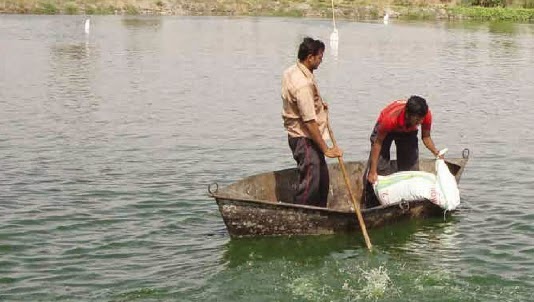First published in International Aquafeed November - December 2014
Interest in channel catfish began when the United States Fish and Fisheries Commission began stocking fish collected from the wild in the 1870s. Channel catfish were native primarily to the Mississippi River Valley but were widely introduced throughout the nation by the Commission. Spawning was first achieved in 1890 in aquaria, at which time it was learned that the male guards the eggs during incubation.
Read the magazine HERE.
Interest in channel catfish began when the United States Fish and Fisheries Commission began stocking fish collected from the wild in the 1870s. Channel catfish were native primarily to the Mississippi River Valley but were widely introduced throughout the nation by the Commission. Spawning was first achieved in 1890 in aquaria, at which time it was learned that the male guards the eggs during incubation.
Pond spawning
was first observed in 1914 at a government hatchery. Spawning nests (nail kegs)
were first used in 1916 and the numbers of fingerlings produced per stocked
female increased. Indoor hatching of channel catfish eggs in troughs equipped
with paddlewheels to move the water in a manner that simulates the fanning of
the eggs by the male fish was first accomplished in 1929.
Commercial
aquaculture was first considered to be economically practical in the late
1950s. Catfish farming developed rapidly during the 1960s and 1970s as
improvements in pond management, disease identification and control, and
prepared feeds were developed and adopted by farmers. The commercial industry
developed in the southern United States within the original range of the species.
At least 90 percent of the farmed fish are produced in the Mississippi River
Valley region.
Channel catfish
have been introduced into Europe, Russian Federation, Cuba and portions of
Latin America. The primary interest in many countries appears to be
recreational fishing.
Channel catfish
are reared in ponds, cages, and circular tanks or linear raceways in both the
United States and China. Monoculture dominates in the U.S., while both
monoculture and poly-culture with traditional species such as carp occurs in
China. Formulated feeds are employed in both nations. The details presented
below refer to channel catfish culture in the United States of America.
The market has
been impacted by an influx of unrelated species of catfish from Viet Nam in
recent years. This has led to intense competition with domestic channel catfish
in the marketplace to the extent that prices paid to many producers do not
offset production costs. Predictions are that some producers may be forced out
of catfish farming, though legislation to require country of origin branding
may provide some relief. Country of origin labelling may aid in moving retail
grocery stores and restaurants towards a preference for domestic catfish. There
is also a movement by the catfish farmers to encourage legislation that would
place a tariff on imported catfish. Prices in the marketplace are fairly
stable.
While the
catfish industry is quite mature, research continues on disease control,
nutrition, genetic improvement, and other aspects associated with the farming
of the species. Research is also being conducted to reduce the level of
nutrients in pond effluents by developing diets that are better utilised by the
fish.
The future of
the catfish industry in the United States is unclear. Until the situation with
respect to imported exotic catfishes is resolved, it is difficult to determine
whether the industry will grow in the future, remain at its current level, or
decline.
The market for
channel catfish in the United States is well developed. Once considered a
product of interest only in the southern states, catfish can now be found in
restaurants and on menus in grocery stores throughout the nation. Consumers see
it as being a healthy choice food. Market expansion may be possible through
development of new product forms and value added processing.
Since channel
catfish are produced almost exclusively on private land there are few
environmental issues associated with production of the species. In cases where
ponds or intensive culture facility effluents enter public waters, there is an
issue of eutrophication that is being addressed, in part, through development
of feeds that are better utilised by the fish. The issue of potential
eutrophication also exists with respect to cage culture.
Source: www.fao.org
Read the magazine HERE.
The Aquaculturists
This blog is maintained by The Aquaculturists staff and is supported by the
magazine International Aquafeed which is published by Perendale Publishers Ltd
For additional daily news from aquaculture around the world: aquaculture-news


No comments:
Post a Comment